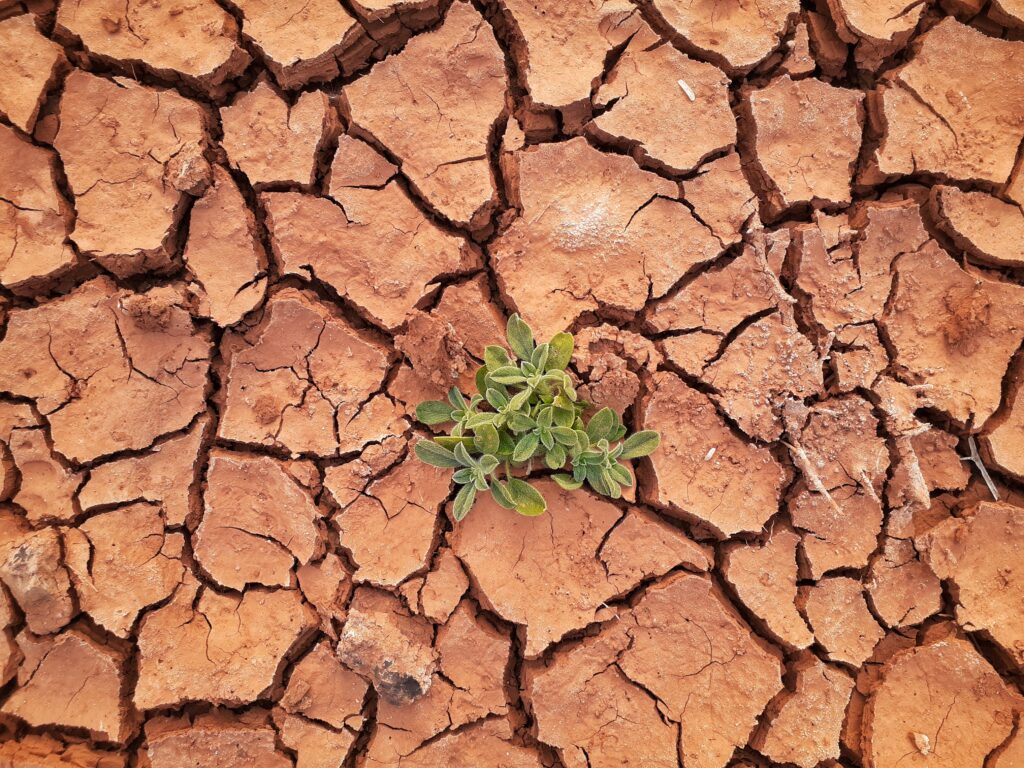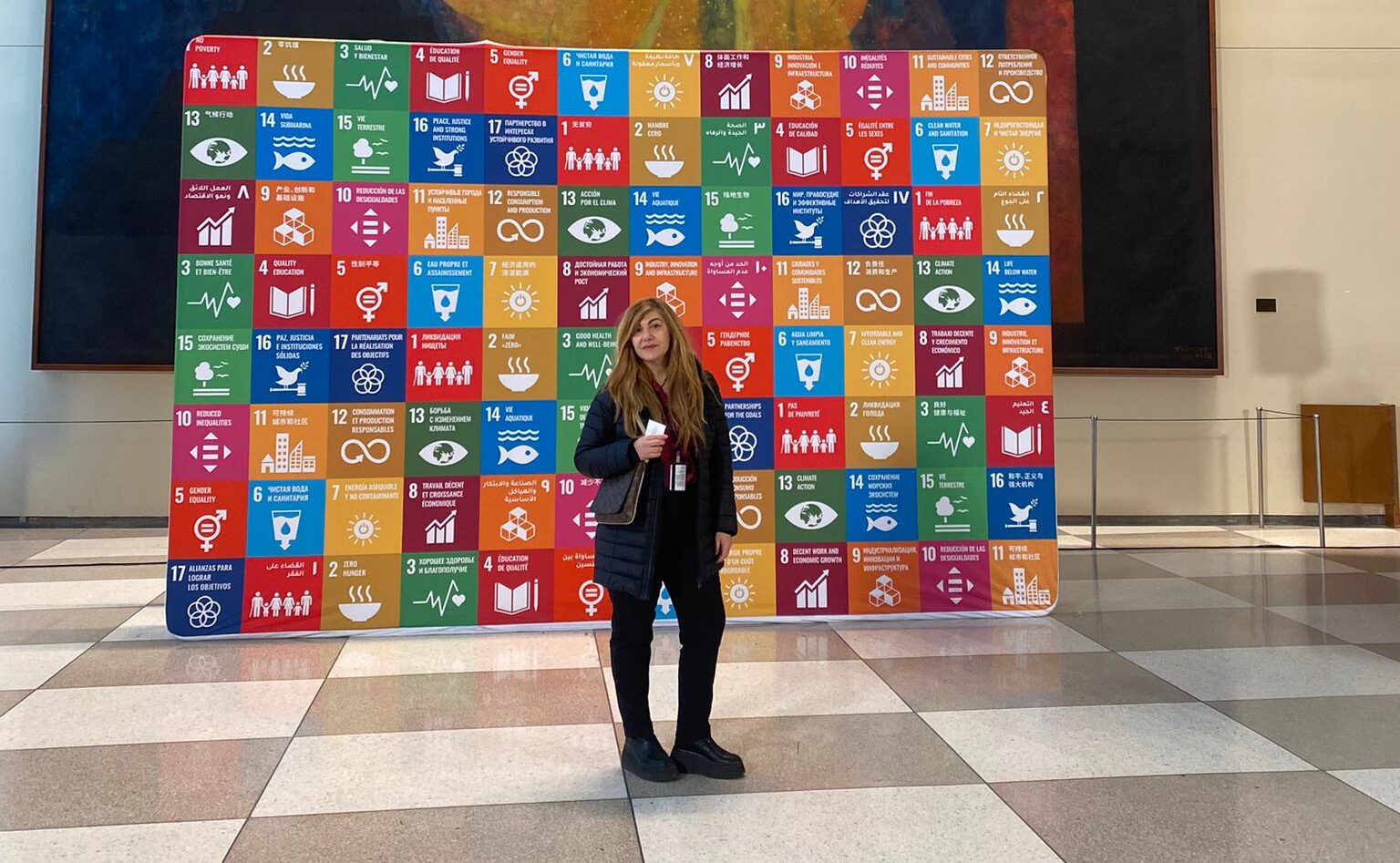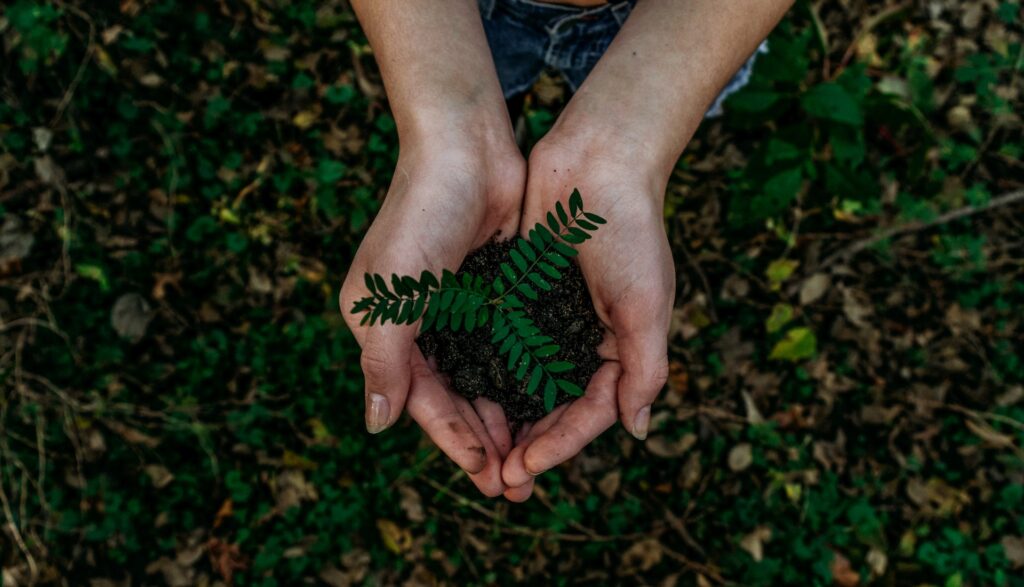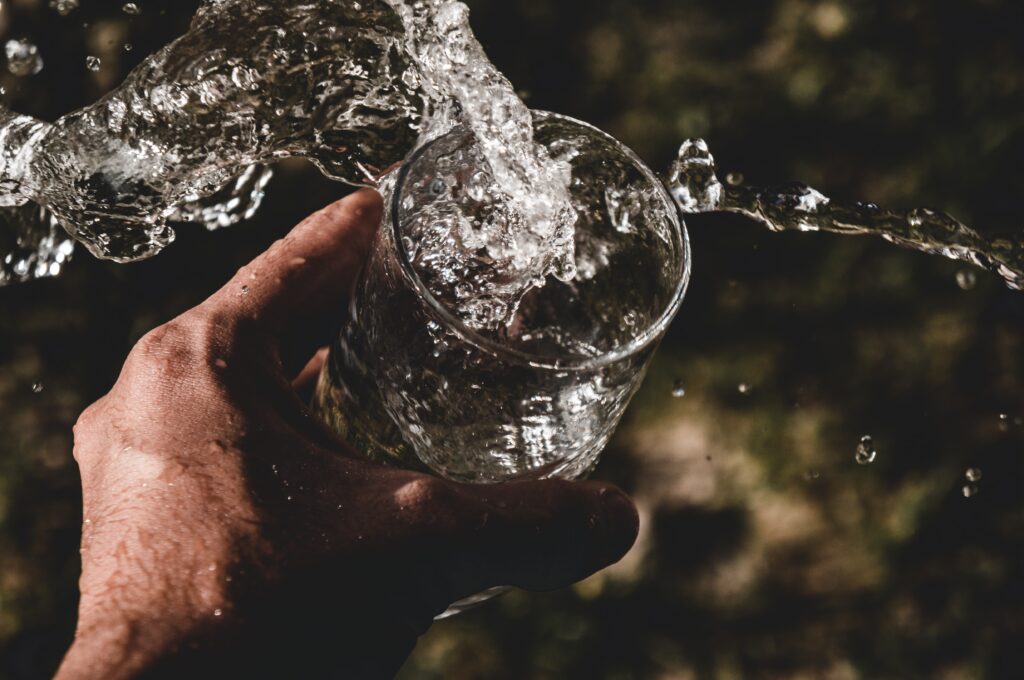
Without water there is no life: we learn this basic concept of biology from our earliest school years. Water is like oxygen: we only realise its importance when it starts to run out. On World Water Day, 22 March, the UN sounded the alarm once again on how this precious commodity is being put under strain by drought and climate change.
Water as a resource is also the subject of study at the Politecnico di Milano: among the researchers involved in this field is hydrologist Maria Cristina Rulli, who together with her team studies the impact of the availability and use of water and land resources on society, starting with food security. We asked her to tell us about her research.
Professor Rulli, you have been involved in Food and Water Security and Hydrology for many years, since when these topics were less media-driven than they sadly are now. What is your personal and academic background, and how did your interest in the subject come about?
«I started out as an engineer, and then obtained a PhD in hydraulic engineering, specialising in hydrology. My scientific background is that of a water scientist. In my scientific career, I first studied water as a risk here at the Politecnico, with Prof. Renzo Rosso, one of the most eminent hydrological scientists and a scholar of hydrological risk; then, after becoming an associate professor, I started to study water as a resource. I started working on water in the context of water and food security in the wake of the selection procedure for the associate professorship. During the selection, all 21 candidates were asked a final question by the president of the board concerning their possible future scientific plans, should they win the selection. The president of the board was Professor Andrea Rinaldo, this year’s winner of what is considered the Nobel Prize for water science, the Stockholm Water Prize 2023. My tentative response was that I wanted to deal with global hydrological issues, that is, I wanted to study what the role of water as a resource was in relation to the great challenges then emerging for humanity. I remember giving this answer in fear that it would not be well received and that it would be considered inappropriate for the disciplinary sector for which the selection was made. In fact, the issues I was proposing involved a change in the spatial scale of investigation compared to usual hydrological analysis and, above all, would require a transdisciplinary approach. However, I gained confidence and immediately put my study intentions into practice. In those years (2010s), the phenomenon of ‘land grabbing’, that is, large-scale land acquisitions by investors, governments and multinationals who, in response to the great financial and food crisis of 2008, were buying up large stretches of land in order to have direct access to natural resources such as land and water for food and energy production, was reaching its peak. This grabbing of land and of other related natural resources, primarily water, is still ongoing and has a negative impact on water and food security in investors’ target countries, which are generally developing countries. I then started, together with Prof. D’Odorico, a friend and colleague who is now a Professor at the University of California in Berkeley, to work on land grabbing, trying to quantify, thanks to my scientific background, its impact on water resources, food production, the environment and society, and I became more and more passionate about the topic. The results of this research have been published in international scientific journals and some of the findings have been used by governmental organisations to inform policies on natural resource use.
In 2014, the School of Environmental Engineering decided to start the Water and Food Security course, one of the first ones on the subject to be started in Europe, and asked me, to my great pleasure, to design and teach it. It was a great honour for me, but also a great concern given the huge social, as well as scientific, importance of the topics covered. »
How would you define the aim of your research in a few words?
«The aim of my research is to contribute to designing strategies for the pursuit of global and sustainable water and food security. To this end, I study the interaction between hydrological processes and humanity. I analyse the impact of global changes on food and water security by considering water-food-energy resources as interconnected (the FEW nexus), meaning that the use/production of one of them, if not sustainable, may preclude the use/production of the others».

The aim of my research is to contribute to designing strategies for the pursuit of global and sustainable water and food security.
Maria Cristina Rulli
How did Glob3ScienCE (Global Studies on Sustainable Security in a Changing Environment), of which you are the co-ordinator, come about?
«Glob3science started as a lab, a collection of people doing research on macro topics of interest. In this case, those topics are the great global challenges of our millennium. Glob3ScienCE deals with global issues centred on natural resources and human activity in the context of global change. Particular attention is paid to analysing inequalities in accessing natural resources and environmental injustice, and studying strategies to overcome them».
Among your studies are the demonstration of the link between Ebola outbreaks and forest fragmentation, and of the link between unsustainable land use and coronavirus spillovers. How did you come to these conclusions and how can we use this information to avoid future pandemics, in your opinion?
«Recent years have seen an increase in the number of emerging infectious diseases, many of which are zoonotic in nature. Such diseases, which can degenerate into epidemics or, as we have seen, pandemics, require a better understanding of the mechanisms by which infectious diseases are transmitted from wildlife to humans and how this transmission can be influenced by ongoing environmental and social changes.
Most human diseases originate from animals (zoonotic diseases), which means that there are several ways in which environmental change, by changing interactions between animals, humans and the environment, can influence the development and transmission of infectious diseases. Environmental change can also contribute to the emergence of infectious diseases in wildlife and the flow of pathogens between species. The loss of biodiversity resulting from environmental degradation can also increase the prevalence of infectious diseases in their hosts. Wild animals often play a crucial role in the outbreak of infectious diseases because they are able to harbour pathogens that are then transmissible to humans directly or indirectly through an intermediary animal closer to the human habitat. Spillover is the transmission of a pathogen from animals to humans. The intrusion of humans and the animals they breed into wildlife habitats can reduce the distance between people and the hosts of pathogens, exposing humans to new infections. The increasing occurrence of zoonotic diseases has been linked to environmental change, including land-use change and the consequent destruction of wildlife habitats, which may favour the flow of pathogens from host species to humans. This phenomenon may also be reinforced by loss of biodiversity as a result of cultivated land, livestock breeding and urbanised areas expanding into wildlife habitats.
Our studies on the link between global environmental changes and the occurrence of zoonoses began a few years ago, studying the link between Ebola virus infections in humans and forest fragmentation in West and Central Africa. In particular, we sought to understand whether land-use change could have played a role in the occurrence of Ebola cases in Africa from 2000 to 2014. In this study, using high-definition satellite data, we not only analysed deforestation and its link with the observed cases of Ebola spillover, but we also assessed forest fragmentation in order to analyse its links with spillover. Forest fragmentation is an anthropogenic process that subdivides the forest into fragments where the forest is interspersed with other land uses such as cultivated areas, urbanised areas and areas with livestock farms.
The results of the study showed clearly the correlation between fragmentation and Ebola spillover, highlighting how unsustainable land-use change can be one of the drivers of spillover. These studies have been appreciated internationally, so much so that the government of Guinea got in contact with us.
In the study on COVID-19, having no scientific evidence on the location of the spillover, but believing that the host animal was the horseshoe bat, we analysed a comprehensive high-resolution dataset of land coverage, livestock density, bat species distribution and land-use changes. We studied the relationship between the risk of coronavirus epidemics and land-use change, habitat fragmentation, animal husbandry and the establishment of human settlements in areas where horseshoe bats are found.
We have shown that in China, areas where horseshoe bats occur are global hotspots for forest fragmentation and pig and poultry production, as well as for urban sprawl, meaning that in these areas, the density of livestock and humans near highly disturbed forest edges is significantly higher than in other regions of the world populated by the same bat species.
This shows how it is necessary not only to reflect on unsustainable land-use changes as a cause of zoonosis spillover, but also on the lifestyle we want to adopt, as this can lead to environmental changes that can then trigger reactions such as zoonoses. Just to give one example, dietary changes associated with increased meat consumption (and hence livestock farming) are recognised as a major driver of land-use changes that can also increase the likelihood of pathogen spillover from wildlife to humans.
Our results indicate the need for new policies that can reduce the risk of spillover by increasing the distance between wildlife and humans. For example, such policies could promote new patterns of land use change, encourage the adoption of diets less dependent on meat, and promote the protection of wildlife and its habitat».

22 March marked World Water Day, established by the United Nations in 1992. This year’s theme is the link between water and climate change: what does this link mean, according to your research experience?
«The UN World Water Summit, last held in 1977, focused on five ‘dialogues’ on important topics such as ‘water for health’, ‘water for sustainable development’, ‘water for climate, resilience and environment’, ‘water for co-operation’, and ‘water for a decade of action’. They discussed water scarcity, access to water for drinking, sanitation and agriculture, and they discuss pollution as well as the focus on the nexus between water, food, energy and ecosystems.
Proposals have been made to remedy the water crisis, some commendable, others much less so.
As for climate change, all global changes, especially climate change, can alter the availability of water resources but also the demand for water. The risk is of exacerbating water scarcity with a not negligible impact on food and energy production. Since the agricultural sector is the largest user of water on our planet, less water means less food production. But less water can also mean less energy, as water is also widely used in industry. Moreover, water can also be the limiting factor in green pathways aimed at limiting CO2 in the atmosphere».

You have also dealt with water resources, land consumption and wars, both in the context of Lake Chad and in that of the consequences of the war in Ukraine. How are they connected? Could drought and climate change be the trigger for new conflicts?
«These are two different studies. In the case of the conflict in Lake Chad, we first sought to shed light on the so-called ‘Water Wars’, armed conflicts over water resources, which have been the focus of heated debate among scientists, politicians and the public. First of all, there is a consensus among scholars that water wars as defined by International Law (armed attack against the territorial integrity and political independence of a state by another state), are unlikely. However, recent decades have seen an increase in inter-state conflicts where the main actors are often parastatal armed groups, such as Boko Haram, that allegedly take advantage of environmental stress. The Lake Chad basin in central Africa is a prime example of a region subject to ‘new’ conflicts, but also to biased debates on the causes of these conflicts. Quantitative analyses of the link (nexus) between water and conflict often tend to simplify the representation of complex realities. However, it should be noted that research on quantitative analyses of the conflict-water nexus is progressing, with the aim of providing the robust scientific evidence needed to inform discussions on this issue. To understand whether and how water availability played a role in the conflicts in the Lake Chad basin, we analysed both environmental and social data describing the conflict. In addition, we attempted to describe the water and land available and/or in use through use of water as resource for directly supporting human life and for producing means of subsistence in the region in question.
The work on the Russia-Ukraine war, on the other hand, analyses the state of availability and economic access to agricultural products and energy since the outbreak of the war by comparing it with the situation in the early stages of the great waves of land grabbing that occurred in the post 2008-2011 financial-food crisis. In the light of the similarities between the two situations, possible future paths of agrarian transition are being hypothesized».

And now it’s our turn: what can we do in our as citizens and as private individuals, for a better management of water as a resource?
«It must first be remembered that water is essential both for our survival and for development. Access to water has been internationally recognised as a universal human right, but unfortunately it is still denied to millions of people. There are many paths to follow, all of which are necessary to reduce inequality in access to water and to pursue environmental, social and economic justice. They concern first and foremost the preservation of the natural resource, the use of which must be contextualised within the perimeter of environmental sustainability. Awareness of the need to do this must be raised both by those who can materially act towards this safeguarding through appropriate policies, and by all citizens who can act through their own behaviour. The availability of water depends on the timing of the hydrological cycle. We the hydrologists have the scientific knowledge to be able to analyse all the physical phenomena relating to the hydrological cycle in order to determine the correct amount of water that can be used in a sustainable manner, i.e., in such a way that the amount of water used can be available again the next time it is needed.
Lifestyles that are too water-demanding and that involve direct water wastage but also indirect water wastage through wasting what has been produced using water, must also be moderated. About 70-80% of the fresh water we use is for agriculture, to produce our food. Different foods require different amounts of water for the same weight to be produced. For example, animal products require considerably more water to be produced (for the same weight) than vegetable products. Let us try to feed ourselves a diet that is of course nutritious but also protects the environment. The example given for the moderation of diets can be repeated for all goods obtained through the use of water.
Last but not least, being engineers, we should try to design strategies and technologies that will help us to save water by making our systems more efficient, but always taking care not to run into Jevons paradox, that increasing resource efficiency will generate an increase in resource consumption, rather than a decrease.
A solid education in environmental sustainability could help us on these paths of sustainable development, i.e., reducing inequalities and pursuing environmental justice. We need to recognise and accept that there can be no long-term development without preserving natural resources. We need to address major challenges through a transdisciplinary approach based on a robust knowledge of the physics of natural phenomena, social phenomena and the interaction between the environment and society.»
